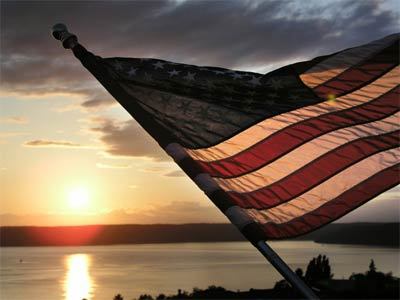Monday, July 16, 2012
Birding Documentary on HBO
Make sure to tune in tonight at 9pm eastern on HBO for the one hour birding documentary called "Birders: The Central Park Effect". Explore the birds who come and go, and those that prefer to stay awhile in New York's hottest birding destination, Central Park! :)
Tuesday, July 10, 2012
Barn Swallow Nesting
Who would have thought that if a birder looks up, he or she will find great things. This past weekend I did just this and I discovered the awesomeness of what is the Barn Swallow nest. I discovered several Barn Swallow nests in Northeastern Pennsylvania this past weekend...a few at Lake Scranton in Scranton, PA and a couple more at a Shop Rite Plaza in Daleville, PA. Both locations were active nesting sites. This was the first time I had seen a Barn Swallow nest in person. You can see the mud pellets that were carried by the swallows to construct the abodes. These birds almost always make their nests in made made structures. Check out the photos!
 |
| Barn Swallow nest at Shop Rite Plaza - Daleville, PA |
Each time I approached the nest pictured above, this little guy would poke his head out and make sure I was keeping some distance..
 |
| Barn Swallow nests at Shop Rite Plaza - Daleville, PA |
There were several nests at the Shop Rite Plaza that were constructed exactly as you can see in this photo. Look up the next time you take a visit to the supermarket!
 |
| Bridge at Lake Scranton |
Bridge located at the northern tip of Lake Scranton. You can see there is a smaller looking structure to the left of the bridge. This is where the Barn Swallows were nesting. We were able to find the nests by watching the swallows. One brought food back to one of the nests and we were in business.
 |
| Two Swallows on ledge at Lake Scranton, PA |
You can see the two Barn Swallows standing on the ledge, watching me and my fiance with our cameras. Before we approached the nest, they tried to ward us off by flying around us looking acrobatic and even flying very close to us at one point. We made sure to take our photos and run because we did not want to disturb them more than we already did.
 |
| Barn Swallow sentries at Lake Scranton, PA |
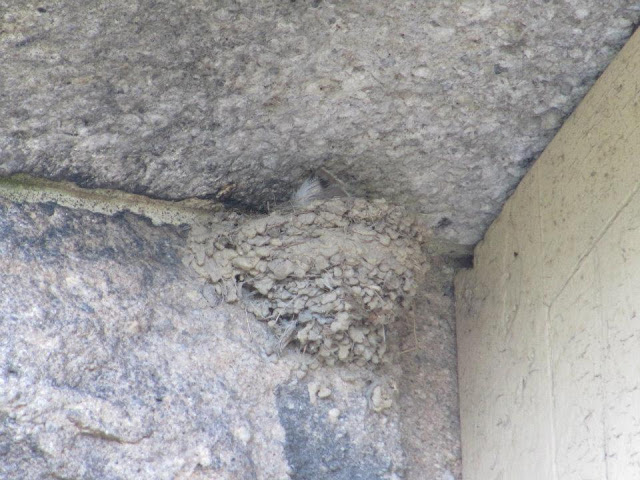 |
| Barn Swallow nest at Lake Scranton, PA |
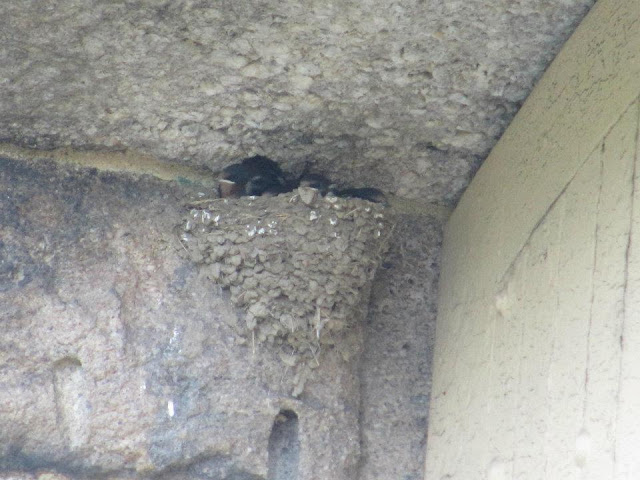 |
| Barn Swallow nest with nestlings at Lake Scranton, PA |
Friday, June 29, 2012
5 Easy Ways To Help Birds Beat the Heat
I thought it would be appropriate to post about a topic such as this on a day like today where temperatures across much of the country are soaring into triple digit figures. In the southeast, all time record highs are expected upwards of 108 degrees. If you've ever heard the saying "hot enough to fry an egg on the sidewalk," well I bet you probably would be able to do that in these kinds of temperatures. While we are inside complaining that it is too hot with our fans or air conditioners blasting, let us remember that our avian friends are not so fortunate to have this kind of technology. They do have a higher body temperature than us humans, but they still must find a way to make it through this extreme heat. There are 5 easy ways that we can help birds beat the heat.
 |
| Photo courtesy of Wikipedia Commons |
Help Birds Beat the Heat
1) Provide Extra Bird Baths - even if you typically have one bird bath, try to make a few more. On a scorching day, competition for bird baths will increase dramatically. One can easily do this by flipping over the lid on your garbage can and filling the lid with about 3 to 4 inches of cold water. Make sure you check on your bird baths every few hours if you can. On really hot days, the water will evaporate so make sure to refill. If the water has not evaporated, check it to see if it is warm. If it has warmed up a lot, dump out the old water and replace it with colder water.
2) Let The Birds Know Water Is Near - try to get a mister or dripper for your bird bath. Any moving water will help to attract birds that are flying over your backyard who may not realize that there is a chance for them to cool down a bit.
3) Bird feeders - try to fill bird feeders with seed and not food that will go bad like suet. Feeders are extremely helpful to birds trying to conserve all the energy they can. Remember that they have to feed their little ones as well. If you are feeling like it is necessary you can "upgrade" your choice of seed for the duration of the heat.
4) Strategic Placement of Feeders and Baths - If it is possible, put feeders and/or baths in the shade. It will keep the birds cooler! Also, try to leave some space between the feeder and the bird bath. Often birds will drop seeds and droppings in the bath if too close. Makes for a fun clean up.
5) Provide Multiple Shade Sources - whether it is natural shade from a weeping elm tree, or a weather guard purchased from your local nature shop, shade sources are extremely helpful to wild birds. Why not plant some more trees in your backyard? There's nothing wrong with thinking about the future. We want to make sure our avian friends are around for our grandchildren to enjoy.
What do you all do to help birds beat the heat? Please share in the comments section below.
Tuesday, June 26, 2012
Fly Me to Dry Tortugas
A Motivational Monday.....on Tuesday.
Off the coast of the Florida Keys lies a National Park that many people may not even know about. It is made up of a group of small islands and is called Dry Tortugas National Park. What is most interesting about this place is its inaccessibility. There are only two ways for you to get there. Don't even think about taking your car over! You'll make it all of about ten feet off of Key West unless you are able to steal a duck boat (not recommended). Hopefully you all appreciate my dry humor since we are exploring the Dry Tortugas..
If you want to get there, you have a couple of options. You can take a boat (either the ferry that goes there or you can charter a boat yourself) or if you are feeling adventurous and you want to spend a little bit of extra cash you might want to opt for the seaplane to Dry Tortugas. Personally, I would lay out the money for the seaplane. How many times in your life can you say you had an opportunity to ride in a seaplane?
 |
| Fort Jefferson at Dry Tortugas National Park courtesy of Wikipedia Commons |
The main feature of this park is the structure that stands on one of the islands, called Fort Jefferson. It is the largest masonry structure in the Western Hemisphere made up of over 16 million bricks...and believe it or not, it remains unfinished!. There is plenty of history available on Fort Jefferson here if you are interested.
Another reason to visit Dry Tortugas National Park is the chance to see coral reefs that are every color of the spectrum just along the edge of Fort Jefferson. All you'll have to do is get some snorkel gear.
Birdwatchers have their chance at a slice of heaven here at Dry Tortugas, especially in the Spring. You might call this place something of a migration paradise. It is a great stopover location for birds that are making the long journey north from South America. A different post will be spent diving into the birding population at this National Park.
Check out this great video below. You can get an idea of how amazing this place is and you can get a quick look at the seaplane. Hopefully I will get a chance to visit sometime soon.
Thank you everyone for visiting!
Friday, June 22, 2012
Pileated Woodpecker vs. Snake
DING DING DING
In the blue corner, weighing in at 11 oz hailing from the eastern woodland forest, the pileated woodpecker!
....and in the red corner the gigantic green snake!
I was browsing youtube for some videos of birds. One of my favorites that I haven't had the opportunity to see as of yet (but heard countless times) is the pileated woodpecker. In this video, a huge snake has made its way into the nest of the woodpecker (100% presumption). The mother has come back to the nest and is now trying to salvage her eggs or hatchlings from the massive snake.
I love the way the bird is determined to defend its home and its eggs even if it means a fight to the death. It is this displayed characteristic that makes me smile as I watch this video. I don't completely understand why it makes me happy but maybe it is just the beauty of instinct. There are so many dangers that birds endure in the wild and predators are just one aspect that they have to deal with...
It would have been incredible to see this altercation in person. If anyone knows what kind of snake this is, please leave a comment and I will make sure to stay as far away from it as possible! I have an intense fear of snakes.... Thanks everyone for visiting!
Pileated Woodpecker vs. Snake video
Thursday, June 21, 2012
A Helpful Bird Watching Game
I've only been birding a little more than one year and in that short span of time I have already witnessed swift changes in the technology that allows us to have an easier time identifying birds, sharing our observations, and organizing ourselves in the field. I am not one to use huge amounts of technology while actually birding, but once I get home I do enjoy it. There is something about carrying the Sibley Guide book with me. It is emblazoned with my struggles and is a symbol of my journey thus far. The book tells a story of my adventures just from a quick glance.
To make a long story short....times are a-changing. the resources are at our fingertips like never before.
I wanted to share with everyone a helpful app I was fortunate to come across last weekend. This app is a little different than most because it a birding app that is helpful and FUN. It is a bird watching game called birdJam Twitch. I know I'm a little late. The app was released in 2009 but I was not on the scene at that point. Nor does the game show any age. It is just as useful as it was when it was released then.
BirdJam Twitch is a fun way for birders to practice their identification skills when they do not have the time to be out in the field. This bird watching game can be bought for $4.99 on the iTunes app store and I recommend it to each and every birder who has access to this platform. Keep an eye on the price because it fluctuates. I was lucky enough to get it for $2.99
The game focuses on the identification of North American birds. Before you start playing the game, you are able to pick a skill level varying from level 1 to level 10. Next you need to pick a category of birds you are going to be identifying. You have the option to pick a setting such as the forest, fields & grasses, marshes, and urban. You can further divide these settings by opting for east or west depending on which location you would prefer to focus on.
If you do not want to pick your group by habitat, you have another option. You can select the type of bird you want to practice identifying. BirdJam Twitch offers the following groupings to toy around with: Ducks and Geese, Shorebirds, Sparrows, Warblers. If you want to get particular about location, again, you can opt for east or west for any of these groups.
 After you make these choices you can start to have some fun. You get three minutes to identify as many birds as possible. A black screen appears and then small pixels start to fill the board, revealing small sections of the bird. The lower the difficulty level, the larger the squares are that reveal the bird. Along the bottom of the screen is where you choose which bird you think is being revealed. If you are wrong, it lets you pick again but your bonus points at the end of the round will be affected. What is good about this game is that it lets you review each bird that you got wrong at the end of the round. This makes it a worthy learning tool.
After you make these choices you can start to have some fun. You get three minutes to identify as many birds as possible. A black screen appears and then small pixels start to fill the board, revealing small sections of the bird. The lower the difficulty level, the larger the squares are that reveal the bird. Along the bottom of the screen is where you choose which bird you think is being revealed. If you are wrong, it lets you pick again but your bonus points at the end of the round will be affected. What is good about this game is that it lets you review each bird that you got wrong at the end of the round. This makes it a worthy learning tool.
At the end of the round, your points are totaled based upon how many birds you answered correctly in the allotted time. Bonus points are awarded for getting birds correct on the first try. There is a high score list and you can submit your score for the category you chose to play.
The only thing negative I have to say about the game is the lack of variety of photos for each species. There is essentially one photo for each because the system will mirror an image every so often to make it seem different. Also the game sticks to showing photos of adult males (in the dimorphic species). It would be much more challenging to throw in photos of juveniles and females.
So if you are tired of sitting and studying your field guide or your Crossley ID Guide, go ahead and make this purchase on iTunes. I would highly recommend it. The game has good replay value and I think everyone could get something out of it.
To make a long story short....times are a-changing. the resources are at our fingertips like never before.
A Fun Birding App
I wanted to share with everyone a helpful app I was fortunate to come across last weekend. This app is a little different than most because it a birding app that is helpful and FUN. It is a bird watching game called birdJam Twitch. I know I'm a little late. The app was released in 2009 but I was not on the scene at that point. Nor does the game show any age. It is just as useful as it was when it was released then.
BirdJam Twitch is a fun way for birders to practice their identification skills when they do not have the time to be out in the field. This bird watching game can be bought for $4.99 on the iTunes app store and I recommend it to each and every birder who has access to this platform. Keep an eye on the price because it fluctuates. I was lucky enough to get it for $2.99
The game focuses on the identification of North American birds. Before you start playing the game, you are able to pick a skill level varying from level 1 to level 10. Next you need to pick a category of birds you are going to be identifying. You have the option to pick a setting such as the forest, fields & grasses, marshes, and urban. You can further divide these settings by opting for east or west depending on which location you would prefer to focus on.
If you do not want to pick your group by habitat, you have another option. You can select the type of bird you want to practice identifying. BirdJam Twitch offers the following groupings to toy around with: Ducks and Geese, Shorebirds, Sparrows, Warblers. If you want to get particular about location, again, you can opt for east or west for any of these groups.
 After you make these choices you can start to have some fun. You get three minutes to identify as many birds as possible. A black screen appears and then small pixels start to fill the board, revealing small sections of the bird. The lower the difficulty level, the larger the squares are that reveal the bird. Along the bottom of the screen is where you choose which bird you think is being revealed. If you are wrong, it lets you pick again but your bonus points at the end of the round will be affected. What is good about this game is that it lets you review each bird that you got wrong at the end of the round. This makes it a worthy learning tool.
After you make these choices you can start to have some fun. You get three minutes to identify as many birds as possible. A black screen appears and then small pixels start to fill the board, revealing small sections of the bird. The lower the difficulty level, the larger the squares are that reveal the bird. Along the bottom of the screen is where you choose which bird you think is being revealed. If you are wrong, it lets you pick again but your bonus points at the end of the round will be affected. What is good about this game is that it lets you review each bird that you got wrong at the end of the round. This makes it a worthy learning tool.At the end of the round, your points are totaled based upon how many birds you answered correctly in the allotted time. Bonus points are awarded for getting birds correct on the first try. There is a high score list and you can submit your score for the category you chose to play.
The Verdict
The only thing negative I have to say about the game is the lack of variety of photos for each species. There is essentially one photo for each because the system will mirror an image every so often to make it seem different. Also the game sticks to showing photos of adult males (in the dimorphic species). It would be much more challenging to throw in photos of juveniles and females.
So if you are tired of sitting and studying your field guide or your Crossley ID Guide, go ahead and make this purchase on iTunes. I would highly recommend it. The game has good replay value and I think everyone could get something out of it.
Tuesday, June 19, 2012
Hummingbird Nest Video
Saw the link to this video on the Bird Watchers Digest website. Thought you all might enjoy :)
Hummingbird Nest !!!
Hummingbird Nest !!!
Monday, June 18, 2012
Fallingwater on Motivational Monday
This Motivational Monday takes us to southwest Pennsylvania. Located approximately 50 miles outside of Pittsburgh is Frank Lloyd Wright's masterpiece, Fallingwater. It's construction was completed in 1939. If you have never heard of Fallingwater, it is an architectural wonder. It actually has a waterfall flowing through the house! How would you all like to be sitting in your living room with your feet up on the ottoman, watching crystal clear water flow through your house? You could even return that nature ambiance maker.
It is always great to start off the week with something fun and inspirational. I hope this post about Fallingwater inspires people to go out and do whatever it is that they want to accomplish. Don't let anyone tell you it can not be done. If they do, go out and prove them wrong. Go and defy the odds and build your own house across a 30 foot waterfall.
Visit Last Week's Motivational Monday
It is always great to start off the week with something fun and inspirational. I hope this post about Fallingwater inspires people to go out and do whatever it is that they want to accomplish. Don't let anyone tell you it can not be done. If they do, go out and prove them wrong. Go and defy the odds and build your own house across a 30 foot waterfall.
Visit Last Week's Motivational Monday
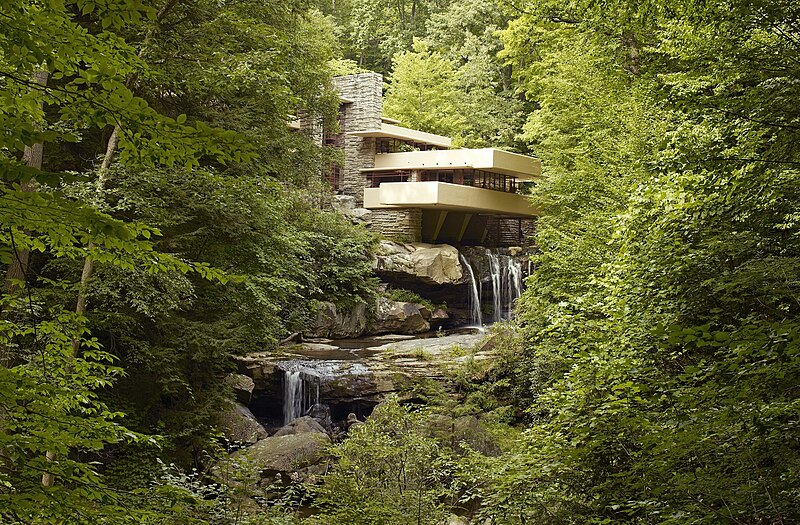 |
| Fallingwater - Courtesy of Wikipedia Commons |
Thursday, June 14, 2012
Bird Symbols in Flags
 |
| United States Flag - Wikipedia |
Since today happens to be Flag Day, I thought it would be fun to write a post on bird symbols in flags from around the world. Yes, I understand that Flag Day is for Old Glory but why can't we have some fun and have a look at some flags that we aren't familiar with? Let's make it an Avian Flag Day. Note: not every single flag with a bird symbol is mentioned below. Some have been omitted.
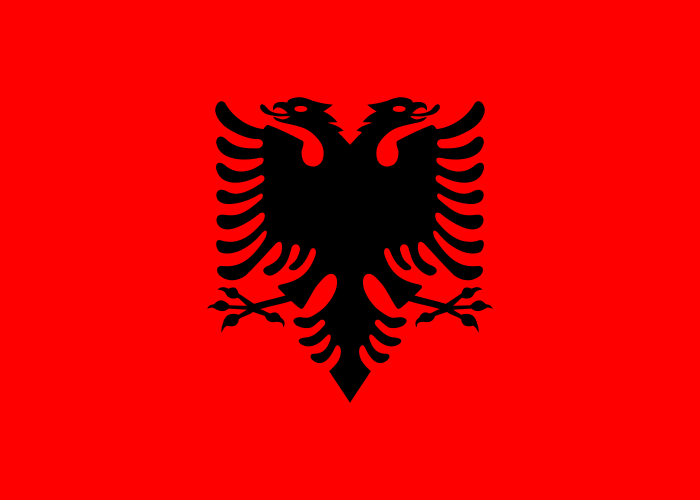 |
| Flag of Albania - Wikipedia |
Our first flag with a bird symbol is the daunting flag of Albania. The bird of the Albania flag is the blaring insignia of a double-headed eagle. It is said that Albanian nationalists used this bird as a symbol of independence from the Ottoman Empire during their struggles in the late 19th and 20th centuries.
 |
| Flag of Ecuador - Wikipedia |
The Ecuadoran flag with birds is one of my favorite bird symbol representatives. It shows us the image of a perched Andean condor on the country's coat of arms. It is considered the National Bird of Ecuador and is watching over the nation with its wings outstretched, symbolizing the power and courage of the country. Notice that the bird is also on the lookout, ready to attack immediately if necessary.
 |
| Flag of Egypt - Wikipedia |
The flag of Egypt bears the national symbol, the Eagle of Saladin. Saladin was a sultan in the 12th century who recaptured Jerusalem for Egypt and Syria from the Crusaders. There is a detail on this flag that one may not have noticed at a quick glance. At the base of the bird symbol, there is a scroll with some Arabic text written across it. The text translates to "Arab Republic of Egypt."
 |
| Flag of Guatemala - Wikipedia |
Of all the flags with bird symbols that we are exploring for Flag Day, this one has to be my favorite. The flag of Guatemala proudly dons the Central American country's national bird, the Resplendent Quetzal. This tropical bird was considered divine in Aztec and Mayan lore. It is a symbol of liberty to the Guatemalan people because it is said that when it is caged, this bird often kills itself.
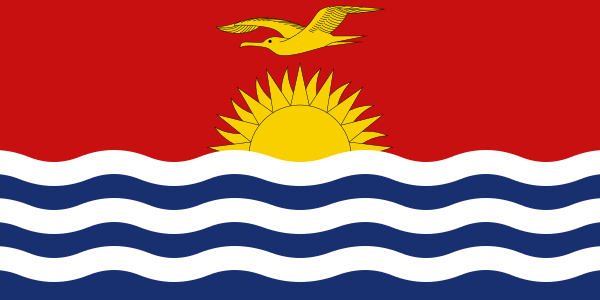 |
| Flag of Kiribati - Wikipedia |
I am sure some folks do not even know the location of Kiribati. You can find this group of islands in the Central Pacific Ocean near the equator. This flag with birds shows one of my favorite avian friends that I have seen in person, the Frigatebird. I had the pleasure of watching a great Frigatebird soar over the Gulf of Mexico in such a graceful manner yet filling the air with its dominating presence. The Frigatebird on this flag is meant to represent freedom, power, and command of the sea. An appropriate bird symbol for Kiribati.
 |
| Flag of Mexico - Wikipedia |
One of my favorite flags of all the world is the Mexican flag. That image in the center of this flag with birds is the story of a nation. The bird symbol of the eagle is perched upon a prickly pear cactus with a snake in its mouth and in the grasp of its talons. Legend has it that the Aztec people were told by their Gods to search for and build their city where this same event was to occur. It ended up being the site for the Aztec city of Tenochtitlan (present day Mexico City) which was built over Lake Texcoco.
 |
| Flag of Uganda - Wikipedia |
Located inside of the white sphere on the flag of Uganda is the national symbol, the Grey Crowned Crane. It represents the diverse wildlife found in this African nation, as well as its gentle nature being a reflection of the Ugandan people.
Hope everyone enjoyed this Flag Day themed post on flags with bird symbols. I thank you all for visiting and for your support. If you learn something before you close out this page then my goal has been accomplished.
Sources
Tuesday, June 12, 2012
The Story of the Purple Martin House
 |
| Purple Martin housing at Cove Island Wildlife Sanctuary, Stamford, CT - John Field / Naturefied |
I can recall when I first started birding a little more than one year ago....
I was walking the trail at Cove Island Wildlife Sanctuary in Stamford, CT. I peered out and saw a strange looking gadget standing alone in the center of a treeless, flat area. It was not yet within range for me to determine what it was. As I inched closer to it, I began to squint my eyes while perusing my memory cache....I was convinced that it was a portable light for folks that decide to stay out in the sanctuary past bedtime! You know...owlers?
As I got close enough to make out the top of the gadget I noticed that there were small openings in the gourd-shaped thingamajigs. Not only were there small openings, there were birds inside of these openings.
"Oh! It's a sweet looking bird house!"
At the time, I had no idea what a Purple Martin was and I had no idea about the unique relationship that exists between humans and the Purple Martin. It is funny to look back on this experience but I am sure some of you might be able to relate to it. Since then, I have done a bit of reading on the subject and would like to pass some of this great information on to all of you.
 |
| Purple Martins at Cove Island Wildlife Sanctuary - Stamford, CT - John Field / Naturefied |
A Relationship is Forged Between Man and Bird
East of the Rocky Mountains, it is said that Purple Martins, the largest swallow in North America would disappear if humans stopped providing them with their gourd-shaped habitations. It has not always been this way, of course.
Native Americans used to hang hollowed out gourds from trees in close proximity to their villages. Eventually, the Purple Martins began to make their nests inside of these gourds as opposed to holes in trees made by woodpeckers and other hollowed out natural cavities.
You Scratch My Back And I'll Scratch Yours
The Purple Martins took advantage of their new homes and their close proximity to the Native American villages. You ask why was this advantageous to the birds?
- The presence of people near the gourds was enough to keep a number of Purple Martin predators out of the vicinity of the nesting sites.
- The gourds provided much needed space that natural cavities could not offer.
 |
| Purple Martin @ Cove Island WS - John Field |
The Native Americans who attracted the Purple Martins by hanging up their carved dwellings had an idea in mind too. Why would they have these birds hanging around their village if they did not serve a purpose for them? I have read a few theories as to why the Native Americans attracted the Purple Martins year after year.
- They posed as scarecrows and kept pests from damaging crops
- They are able to act as a warning signal to notify those of unwanted visitors to the village
- Martins chased Vultures from meats and hides that were curing outside the village
I am sure there are many more reasons as to how these birds were helpful to the inhabitants of the villages. Just use your imagination! I bet they were wonderful company and a spectacle at times.
The Purple Martin In More Recent Times
When the Europeans arrived in the "New World" they continued the practice of creating houses for Purple Martins. All they did was change up the material a bit. The idea diffused from the Native Americans to the Europeans.
The creation of and maintenance of the Purple Martin house has continued up through today which is why we have approximately one million people who try to attract Purple Martins each year in their own yards. There are many unique styles of Purple Martin houses available and some of them are quite beautiful. If you are able to attract a Martin, or a Martin colony, they should return year after year as long as you keep the nesting area tidy. The problem that Martins are facing is very harsh competition for nesting from the House Sparrow and European Starling, two non-native species.
The video above shows a fantastic setup of the Purple Martin Houses. Look how many this person was able to attract! And you can enjoy watching them gang up on Mr. Squirrel. Hope you all enjoyed this post and most of all I hope you have learned as much as I have!
Your comments are always appreciated. Thanks for visiting!
For more information on this incredible species and how you can take measures to secure their future, please visit http://purplemartin.org/main/mgt.html.
Resources
http://purplemartin.org/main/mgt.html
http://en.wikipedia.org/wiki/Purple_Martin
http://www.allaboutbirds.org/guide/Purple_Martin/id
Endangered Animals State by State
The first step to solving a problem is to recognize what the problem is....
Which Endangered Animals Inhabit Your State ? ?
Monday, June 11, 2012
A Great Smokey Mountain National Park Monday
Great Smokey Mountains National Park
Everyone grab your coonskin hats. This is the United States' most visited National Park, nestled between the states of North Carolina and Tennessee. I made a visit here about a year and a half ago. The fall colors of the Great Smokey Mountains National Park were out of this world. It reminded me of an outdoor kaleidoscope.
If you decide to go, make sure to visit Clingman's Dome! It is a short hike on a paved trail with staggered benches for those worried about accessibility and difficulty. The observation tower at the end of the haul is well worth your effort.
And if you are lucky, you will wake up, take a short drive, and be treated to something that looks like this...
The sea of clouds makes its way through the crevices created by the Great Smokey Mountains.
 | ||||
| Great Smokey Mountains National Park - Photo Credit John Field - Naturefied |
 |
| The Smokeys are also known for their abundance of Rhododendron. Credit John Field - Naturefied |
If you missed last week's Motivational Monday
Hope everyone has a great Monday and enjoy the Great Smokey Mountain National Park photos!
Thursday, June 7, 2012
A Bird Migration Marvel
 |
| Northern Wheatear - Courtesy of Wikipeda |
Reading about birds and their pan-global migration patterns makes my head spin. Especially the Northern Wheatear. Each year, this little guy pictured above flies from the Arctic where it spends the summer months to the Sahara Desert in Africa where it passes the winter season. And we complain about our commute to work! Thanks to technology, scientists were able to find out more information regarding their migration pattern. The power and determination of birds never ceases to amaze me....
Tuesday, June 5, 2012
The Wild Horses of Assateauge
 |
| Wild Horses of Assateauge Island - courtesy of NPS.gov |
Assateague Island is a top birding destination for many, but it offers much more magic to its visitors besides the Atlantic Flyway stopover that it is for our migrating winged friends. A lot of you may or may not know that Assateague Island National Seashore offers its visitors the chance to see wild horses running free on this barrier beach island off the coast of Virginia and Maryland. This post aims to answer some burning questions about the mysterious wild horses of Assateague.
Where can I see wild horses in the United States?
One can view wild horses at the Assateague Island National Seashore, a barrier beach island located off of the coast of Virginia and Maryland.
How many horses are there total?
There are approximately 300 wild horses of Assateague. A herd of 150 exists on the Virginia side and another herd of 150 makes its way on the Maryland side of the island. There is a fence that divides the Virginia side from the Maryland side of the island. These herds are divided into smaller groups of two to twelve horses that occupy certain territories.Are Assateague Island's wild horses really wild?
No. The horses seen on Assateague Island are actually considered feral even though they live in a wild environment. This means that the horses seen on the island are actually descendants of domesticated horses. The "wild horses" were able to adapt to the conditions found on the island in order to survive. This has to tell you something about the type of animal we are dealing with. To be able to make due with what they have is astounding.Where did the horses come from?
Well, that really depends on who you ask. Some say that a Spanish galleon sank off the coast of Assateague Island in the 1600s and the horses were able to swim to shore. Others say that early colonial settlers allowed their horses to roam free and graze at this location. There is no hard proof for either theory at this point in time.What kind of role do humans play in the lives of the wild horses?
- Each year on the last Wednesday in July, the wild horses of Assateauge on the Virginia side swim across Assateague Channel to Chincoteague Island where they are auctioned off. This is done to control the rising number of horses which could be detrimental to the island's ecosystem and the future of the herds.
- On the Maryland side of the island, some of the female horses are given contraception via dart gun which controls the birthing levels. The vaccine is not harmful to the horses.
- A team employed by Assateague Island National Seashore is in charge of making sure that visitors do not get within 10 feet of the horses. It is forbidden to feed them. If you are caught doing either, you'll be slapped with a $100 fine.
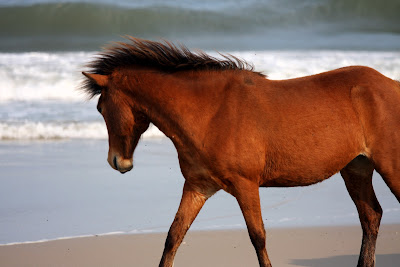
Wild Horse of Assateague on Shoreline - Courtesy of Wikitravel.org
http://www.nps.gov/asis/naturescience/horses.htm
http://www.assateagueisland.com/wildlife/pony.htm
http://www.assateagueisland.com/ponyswim/ponyswim.htm
Monday, June 4, 2012
Motivational Monday in the Golden Triangle
Here at Naturefied, we like to start the week out with a punch! Motivational Monday will be a series of photos of a given location in the world. Most are places that I dream of visiting and experiencing. Hopefully this will provide some extra motivation to all of you to get through the difficult day and week ahead. It is always good to remember how to dream and to hope to make that an eventual reality. All of the hard work that you do, whatever it may be, does pay off. I hope that you all get to experience many of these wonderful places for yourselves. If you are not able to at this point in time, do not fear. One day you will make it there.
So let's get started!!!
So let's get started!!!
Angkor Wat, Cambodia
Read about all of Angkor UNESCO Heritage Site | ||||
| Angkor Wat in Cambodia © Getty Images |
 |
| Angkor Wat architecture - courtesy of photodarma.net |
 |
| Angkor Wat architecture - courtesy of photodarma.net |
Friday, June 1, 2012
The Poconos Birding Adventure Part 2
After our hike at the Lacawac Wildlife Sanctuary, my fiance and I realized it was getting a little late and we wanted to hit one more birding destination recommended by NEPA Audubon. We put in a few places in our GPS to see how close we were to some of the local hot spots. Finally, we decided we would take the thirty five minute drive north to Dorflinger-Suydam Wildlife Sanctuary located in White Mills, PA.
I was drawn to this place for one reason and one reason only.
Bobolinks. I love Bobolinks. Not only do they have the most awesome song of any North American bird I have ever heard, but the male's color pattern during the breeding period is spectacular.
I've never seen a male Bobolink in person and this was my first chance to do so. Dorflinger-Suydam has a long stretch of a grassy meadow landscape near the entrance.The Bobolinks love this type of environment.
After being flushed by a car, the Bobolink pictured above flew out into the field not far from the edge. We crept up as close as we could to try and sneak a photo because our camera is amateur and needs to be close to get a decent photo. I was surprised at how close he let us get to him. We got within approximately 30 feet. I thought for sure he would be afraid because a car from a couple of hundred feet flushed him easily. We snapped a few pictures. He was posing for us for a few minutes, perched on some tall blades of grass. Another car drove by behind us and he finally flew away.
 Most would find this Wildlife Sanctuary a wonderful place to spend an evening. The biggest difference between this one and Lacawac was that Dorflinger-Suydam was a much more manicured setting. It felt artificial in some places and that to me felt abnormal. I enjoy a much more wild, natural environment but that is just my personal opinion.
Most would find this Wildlife Sanctuary a wonderful place to spend an evening. The biggest difference between this one and Lacawac was that Dorflinger-Suydam was a much more manicured setting. It felt artificial in some places and that to me felt abnormal. I enjoy a much more wild, natural environment but that is just my personal opinion.
Most of the birds we saw were concentrated around the Glass Museum. There were two Eastern Phoebes fly-catching on the south side of the building. One was perched on a birdhouse and the other was on a low tree branch. They would take turns leaving their perch, aggressively catching insects. It is awesome to see the flutter of their wings as they go and snap their mandibles on their prey. This one on the left would not swallow the bug in his mouth. He was holding it clenched between his beak for a good ten minutes. Maybe he was feeling threatened by our presence but it was hard to tell for sure.
 You can tell by the photos we took that this place has a number of different environments for birds allowing for more biodiversity. I am sure that if we were here earlier in the day we would have had a much more successful list but considering we only spent a little more than an hour there I was satisfied. Not to mention I got to see my first male Bobolink!
You can tell by the photos we took that this place has a number of different environments for birds allowing for more biodiversity. I am sure that if we were here earlier in the day we would have had a much more successful list but considering we only spent a little more than an hour there I was satisfied. Not to mention I got to see my first male Bobolink!Make sure you take some time to do some birding in the Poconos.
Tree Swallow (1)
Barn Swallow (2)
Eastern Phoebe (3)
Cedar Waxwing (7)
Black-Capped Chickadee (1)
House Wren (1)
Chipping Sparrow (2)
Bobolink (2)
Red-Winged Blackbird (1)
House Sparrow (2)
 |
| This Black-Capped Chickadee was darting into a fence post |
 |
| Then he came out to say hello! |
As always, your comments are appreciated. Thanks for visiting :)
Thursday, May 31, 2012
Lacawac Sanctuary Birding Adventure
 |
| Tree Swallow, Lacawac Sanctuary |
It has taken a few days to get my pictures up but I am finally ready to share the adventures from my Memorial Day trip with all of you. I look forward to writing these types of posts in the future. Spreading the awareness of the wealth that nature has to offer and the importance of conservation are some of the things I strive to do and I hope to be able to through sharing my personal experiences. All of the photos were taken by my fiance and I.
 |
| Entrance to Lacawac Sanctuary |
I spent the extended weekend in the Poconos in Northeast Pennsylvania. Sunday was a beautiful day so we decided to take advantage of the opportunity to do some hiking and birdwatching (I'll find any excuse to bring a pair of binoculars out with me). Thanks to NEPA Audubon's website, we found a couple of places that we thought would be worth our time.
 |
| Start of the Maurice Brown Nature Trail, a 1.2 mile loop |
The first place we decided to visit was Lacawac Sanctuary. It is situated on the shore of Lake Wallenpaupack. There were several hiking trails available. One of them which spanned over rocks left behind by glacial activity and approached Lacawac Lake, and another that went through a small meadow followed by dense mixed deciduous/pine forest. The latter was the one we decided to take, called the Maurice Brown Nature Trail.
Since we started the hike at around 1:30pm I wasn't expecting a crazy amount of bird activity. We made it through the meadow without seeing a single bird. It was way too quiet for my liking. I was already thinking to myself that this was going to be a great day....then as soon as we stepped into the dense forest, I began to hear calls. First a Carolina Wren. The LOUDEST bird in the forest by far. Then some American Robins up high in the branches of the deciduous trees. And then I spotted a Northern Flicker foraging on the ground, using his sharp beak to dig for his lunch.
 |
| Hermit Thrush on the trail |
Once we made it out of the forest we were treated with a few Tree Swallows and an Eastern Bluebird.
To be continued.......
 |
| Scarlet Tanager |
Tuesday, May 29, 2012
Wild Weather 2012
The first five months of 2012 have brought us some crazy weather in the United States. What does this mean for the rest of 2012?

We are seeing earlier than normal development in the tropics this year. The official start of the hurricane season does not begin until June 1 and we have already seen two named storms in the Pacific (one of them considered "major" at Category 3) and one named storm in the Atlantic that is bringing torrential rains from Orlando all the way to the coast of Georgia.
What does this mean for our hurricane season this year?
This is 100% speculation, but I believe the Atlantic coast is long overdue for a strong hurricane to make landfall. I pray that I am wrong, but last year New York City/Long Island got off easy. Things could have been much, much worse had Irene made landfall as a Category 1 or 2 hurricane. One positive thing is that authorities are not taking these situations lightly. Not after what happened in New Orleans in 2005. No one wants another Hurricane Katrina on their watch. All precautions were taken and mandatory evacuations were made close to the shoreline due to the risk of severe flooding. Mayor Bloomberg of New York City had mandatory evacuations of low lying areas close to the Battery in Manhattan for the first time in the city's history.
In these types of events I would have to agree with Mayor Bloomberg's decision. One can never be too cautious when dealing with Mother Nature. We are talking about the ocean here. It eats ships like we eat oyster crackers and can swallow people alive in an instant. When hurricanes come ashore who really knows how much havoc the storm surge and flooding is going to create. See the video below from Tropical Storm Irene as it made landfall on the coast of Connecticut. Keep in mind the body of water is the Long Island Sound. Typical waves are two feet.
Here is a list of some of the wild weather we have had so far in 2012.

We are seeing earlier than normal development in the tropics this year. The official start of the hurricane season does not begin until June 1 and we have already seen two named storms in the Pacific (one of them considered "major" at Category 3) and one named storm in the Atlantic that is bringing torrential rains from Orlando all the way to the coast of Georgia.
What does this mean for our hurricane season this year?
This is 100% speculation, but I believe the Atlantic coast is long overdue for a strong hurricane to make landfall. I pray that I am wrong, but last year New York City/Long Island got off easy. Things could have been much, much worse had Irene made landfall as a Category 1 or 2 hurricane. One positive thing is that authorities are not taking these situations lightly. Not after what happened in New Orleans in 2005. No one wants another Hurricane Katrina on their watch. All precautions were taken and mandatory evacuations were made close to the shoreline due to the risk of severe flooding. Mayor Bloomberg of New York City had mandatory evacuations of low lying areas close to the Battery in Manhattan for the first time in the city's history.
In these types of events I would have to agree with Mayor Bloomberg's decision. One can never be too cautious when dealing with Mother Nature. We are talking about the ocean here. It eats ships like we eat oyster crackers and can swallow people alive in an instant. When hurricanes come ashore who really knows how much havoc the storm surge and flooding is going to create. See the video below from Tropical Storm Irene as it made landfall on the coast of Connecticut. Keep in mind the body of water is the Long Island Sound. Typical waves are two feet.
Here is a list of some of the wild weather we have had so far in 2012.
- Extreme tornado outbreaks in the south and midwest in January/early March. This past January we saw the third most amount of tornadoes on record for any January since 1950 (weather.com). Tornado season does not typically start until April.
- Anyone remember that winter we had? Oh that's right, we didn't have one. My snapdragons, a hardy annual plant even overwintered. We had the warmest March on record in the lower 48. At the end of April, the National Oceanic Atmospheric Association (NOAA) announced that the first four months of 2012 combined were the warmest on record.
- Early development of hurricanes in Pacific and Atlantic basin. Two named storms in the Pacific (one a major storm) and one named storm that has made landfall in the Atlantic before the official start of hurricane season.
What does the future hold for our planet?
I want to know your opinion! Chime in below :)
Friday, May 25, 2012
Where Are You Going for Memorial Day?
Here is a list I compiled of some fantastic places where one can spend some time during the unofficial start to the summer season. Let's not forget all those folks who have lost their lives for our country in order for us to live how we want to and pray for those who are currently abroad or at home serving the United States of America.
1) Washington D.C
Get out to the nation's capitol! Check out the museums and monuments. Pay tribute to our fallen soldiers at the World War I, World War II, Vietnam War, Korean War, and Iwo Jima Monuments. Visit America's largest burial ground, Arlington National Cemetery. If you are into some other things you can try the Botanical Garden (my personal favorite) and the Smithsonian Air & Space Museum.
2) USS Arizona Memorial, Pearl Harbor, Hawaii
Who can forget how the United States was forced to enter World War II when our navy was ambushed by Japanese Kamikaze pilots at Pearl Harbor on the island of Oahu, Hawaii. This would be the ultimate place to pay respects to our fallen soldiers. I have visited this site and it was a very solemn experience. I would recommend everyone visit this site if possible. They show a heart-wrenching video to the visitors before they put you on a boat to get to the actual site of the USS Arizona.
3) Mount Rushmore, South Dakota
The Black Hills of South Dakota are one of my favorite places that I have ever visited. The beauty and diversity that one can find in the landscape here is not comparable to any other. Visit one of our nation's most important pieces of artwork in Mount Rushmore and then take in a nice picnic lunch at Sylvan Lake in the Black Hills. Or if you are a bit more adventurous you can hike the tallest peak between the Rockies and the Pyrenees Mountains, called Harney Peak.
4) 9/11 Memorial - New York, New York
Although this memorial does not commemorate fallen soldiers it deserves a visit because of the significant impact this event has had on everyone's life in this country. The people who lost their lives on September 11, 2001 will never be forgotten in our minds and in our hearts. The brave workers in the World Trade Center including civilians, New York City Police, New York City Firefighters, God Bless You!
5) Boston Common Flag Display, Boston, Massachusetts
33,000 American flags will be on display in Boston Common this Memorial Day Weekend remembering all of the soldiers of Massachusetts who have lost their lives since the Civil War. What an amazing site it would be to see this many flags lined up. Don't forget to stop by Quincy market and the Boston Aquarium is a great place to visit (especially during bad weather).
6) Jones Beach Air Show, Wantagh, New York
Thousands of people will make their way out to Jones Beach on Long Island to celebrate the unofficial start of Summer. Bring a blanket, an umbrella, pack a picnic lunch and enjoy the aerial festivities. You can sit right on the beach and the planes will fly directly over you. My favorite are the US Navy Blue Angels of course! Jones Beach Air Show for some more info in case you are interested....
7) Your Own Backyard, Anytown, USA
Tired of all the hustle and bustle? Why not spend a nice relaxing weekend in your backyard with some great family or at a friend's backyard grilling some burgers, hot dogs and throwing back a few cold ones. Put on a baseball game, or even play some baseball with your buddies. Maybe it is even warm enough for the first dip in the pool of the season (if you are brave!).
Hope everyone enjoys this Holiday Weekend and remember to stay safe!
Subscribe to:
Posts (Atom)




